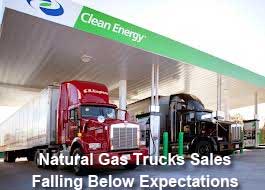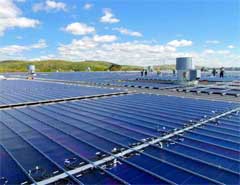Below are the GreenSupplyChain.com's selection of the top stories on the subject in 2014.
In March, Greenpeace activists hanging large banners critical of giant Procter & Gamble from the company's iconic "twin towers" in downtown Cincinnati over the company's practices relative to using/sourcing palm oil.
Nine Greenpeace activists somehow managed to elude security and enter the P&G buildings around midday. They made their way 12 stories up, used plyers to break window locks, and then used existing zip cords set up for building window washers to rappel down the building and unfurled a pair of 60-foot banners. One female member of the group dangled on a zip cord between the towers wearing a tiger suit.
The banners said "Head & Shoulders, Stop Putting Tiger Survival on the Line" and "Head & Shoulders, Wipes out Dandruff & Rainforests."
All were arrested and charged with felonies, though most have reached agreements with prosecutors to avoid jail time.
In Q1, news that the global warming "pause" has continued in 2013, to the consternation of many environmentalists, making some 16 years with little or no warming, contrary to earlier predictions and models.
That seems to cause many climatologists to up the rhetoric even more, however, with the UN IPCC report (while acknowledging the warming pause) in the March time frame saying rising temperatures "will place the world under enormous strain, forcing mass migration, especially in Asia, and increasing the risk of violent conflict," the release of the draft report says.
It also report forecasts that the warming climate will take its toll on human health, pushing up the number of intense heat waves and fires and increasing the risk from food and water-borne diseases, among many other disasters.
In April, outgoing Walmart CEO Michael Duke says in interview that relative to its sustainability program that "This is not about a small group. It's not about a corporate team. It's about getting two million people that work for Walmart excited all over the world about sustainability."
Despite all Walmart's efforts, the retailer's total greenhouse gas emissions have actually grown since 2005, as mitigation efforts simply can't keep up with Walmart's overall business growth.
How does Duke view that contradiction?
"There's nowhere in our strategy that says we want to shrink the company. We still want to keep growing," Duke says.
Duke adds that Walmart is taking moves to increase the focus on sustainability by managers. For example, starting last year, its buyers are now being evaluated on their use of the supplier sustainability index scores in sourcing decisions, and how much progress is being made in the categories which they manage.
"It causes the merchants then to look at everything that we sell and say, 'How do we improve the index? How do we make it better?'" Duke says.
In June, BP as usual released its annual Statistical Review of World Energy, finding that total energy consumption worldwide was up 2.3% in 2013, up from 1.8% in 2012 but a bit below recent the 10-year average of 2.5%.
Global oil consumption grew by 1.4 million barrels per day (b/d), or 1.4% - this is just above the historical average. Countries outside the OECD now account for the majority (51%) of global oil consumption and they once again accounted
for all of the net growth in global consumption.
However, oil's 32.9% share of global energy consumption was the lowest since BP began tracking the measure in 1965, and meant oil lost market share for the fourteenth consecutive year.
Despite concerns over CO2 emissions, coal consumption grew by 3% in 2013, well below the 10-year average of 3.9% but still placing it as the fastest-growing fossil fuel. Coal's share of global primary energy consumption reached 30.1%, the highest since 1970.
Also in June, the EPA announced new rules for US coal-powered electric plants, designed to reduce their CO2 emissions by 30% from 2005 levels by 2030.
The rules are highly controversial, and some say impossible for coal plants to reach, effectively dooming hundreds of them to closure, with warning of coming brown outs from the move. Environmentalists laud the rules as attacking the largest US source of CO2 emissions.
The new rules have been challenged in court.
 In July, Cummins announced it had partnered with the California Energy Commission (CEC) to develop a new engine built to run on E-85 fuel, which is a blend of 85% ethanol and 15% gasoline. In July, Cummins announced it had partnered with the California Energy Commission (CEC) to develop a new engine built to run on E-85 fuel, which is a blend of 85% ethanol and 15% gasoline.
The new medium-duty engine is in final testing and called the Ethos 2.8 E85. Because E-85 burns cleaner than gasoline, Cummins says Ethos-powered vehicles should produce up to 80% fewer carbon dioxide emissions (CO2) than a similar gas-powered truck while offering comparable performance and total-diesel-based engines used in the 19,500 lb. step-van market.
The Ethos engine is designed to run on cellulosic E-85, rather than traditional corn-based ethanol.
In July, Australian Prime Minister Tony Abbott at last made good on a campaign promise that was key to putting him into office by getting a law to repeal the country's unpopular carbon tax. Australia was almost alone in implementing such a tax, which was blamed for rising energy costs and seen as a threat to the country's commodity-based economy.
Meanwhile, around the same time, the IMF issued a report that not only called for virtually every country on the globe to implement the carbon tax, but actually claimed to have identified specific levels of such a tax for a number of countries.
In the US, for example, the IMF recommends higher taxes on diesel of a little more than 40 cents per liter, or some $1.60 more per gallon.
Deployment of natural gas powered trucks, which many expected to really take off in 2015, instead fall well behind expectations. In mid-year, Power Systems Research cuts its estimate for unit sales growth in 2015 in North America to 20%, versus previous estimates that forecast a 100% increase in sales.
 What's causing the relative slow down? Several factors: still large costs deltas between nat gas tractors and traditional diesel, a relatively long (four-year) payback period for carriers, continued improvements in diesel mileage that are cutting the natural gas operating cost advantage, and - why didn't we think of this before? - concern from carriers that any fuel savings that they do achieve will not be financially realized but instead simply result in low fuel surcharge recoveries. What's causing the relative slow down? Several factors: still large costs deltas between nat gas tractors and traditional diesel, a relatively long (four-year) payback period for carriers, continued improvements in diesel mileage that are cutting the natural gas operating cost advantage, and - why didn't we think of this before? - concern from carriers that any fuel savings that they do achieve will not be financially realized but instead simply result in low fuel surcharge recoveries.
And all that was before diesel prices fell sharply in the last couple of months of the year.
At the CSCMP conference in San Antonio, the following companies were recognized with SmartWay awards from the EPA:
Large shippers: Hewlett-Packard, Lowe's Companies and The Home Depot
Medium Sized Shippers: Johns Mansville, Kimberly-Clark, and SC Johnson
Smaller Shippers: Nordstrom
For 3PLs:
Large 3PLs: Expeditors International, Menlo Logistics, and Ryder Supply Chain Solutions
Small 3PLs: ShipCarsNow (a division of Union Pacific)
Some 44 carriers were awarded at a separate event.
 Various reports note that costs for solar power panels is falling more rapidly than expected, with experts noting solar after all is a "technology," and thus subject to something like Moore's Law. That includes a report from the Energy Department's National Renewable Energy Laboratory (NREL) and Lawrence Berkeley National Laboratory (LBNL) that says that the price of utility-scale solar power is 59% below where analysts thought it would be at this point when estimates were made back in 2010. Various reports note that costs for solar power panels is falling more rapidly than expected, with experts noting solar after all is a "technology," and thus subject to something like Moore's Law. That includes a report from the Energy Department's National Renewable Energy Laboratory (NREL) and Lawrence Berkeley National Laboratory (LBNL) that says that the price of utility-scale solar power is 59% below where analysts thought it would be at this point when estimates were made back in 2010.
According to another report from Deutsche Bank around the same time, solar electricity is on track to be as cheap or cheaper than average electricity-bill prices in 47 US states by in 2016, if the current 30% tax credit on system costs, set to expire also in 2016, are maintained, a likely though not certain possibility.
The UN Climate Summit ends in December in Lima, Peru, with basically another agreement to reach a final agreement next year in Paris, where fireworks are sure to ensue. One key issue will be previous commitments by developed countries to contribute $100 billion annually starting in 2020 to developing ones – including China - to somehow move to clean energy faster and to mitigate the effects of warming. How that funding will occur, and whether there will be funding before 2020, are questions that are already causing sparks.
Second, will whatever agreement is reached (assuming there is one) be legally binding, or voluntary commitments to CO2 reduction? The tea leaves seem to point to voluntary commitments, in part as pushed by the US to avoid a requirement for Senate approval of a treaty. How all this plays out will have a significant impact om the rules under which supply chains operate.
WAny reaction to our top Green Supply Chain stories of the year? What did we miss? Let us know your thoughts at the Feedback button below.

TheGreenSupplyChain.com is now Twittering! Follow us at www.twitter.com/greenscm
|